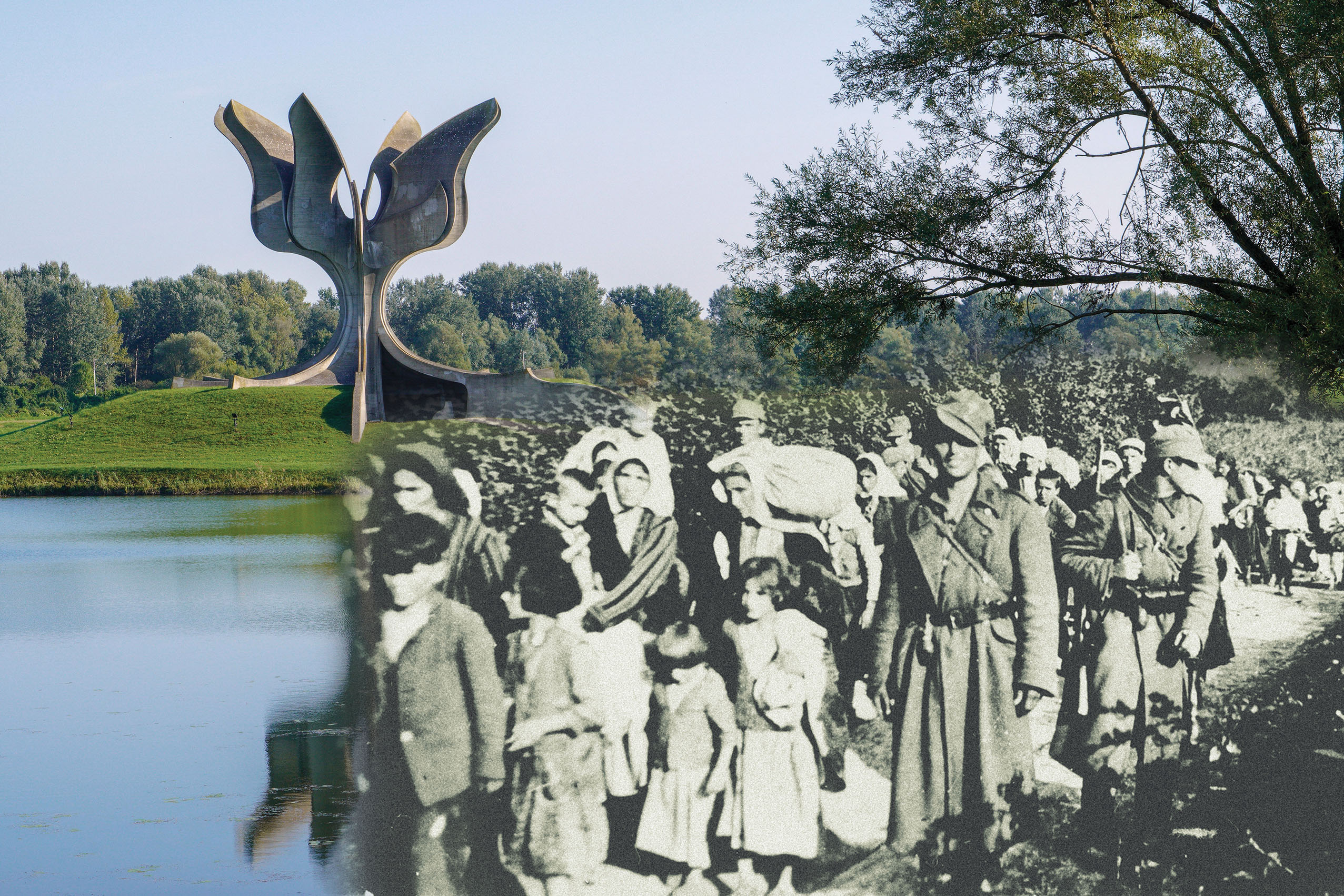While not as instantly recognizable as Dachau or Buchenwald, Jasenovac concentration camp has nevertheless been described as the “Auschwitz of the Balkans” in recognition of its size and the scale of horrors that occurred there during World War II.
In April 1941, following the Axis powers’ invasion and partition of Yugoslavia, the nationalist Ustashe organization was appointed to govern the newly anointed Independent State of Croatia. The fascist Ustashe were diligent students of the Nazi regime, thus the repressions seen in Germany—chiefly the victimization of Jewish and other minority citizens and the rise of Aryanism—filtered into everyday Croatian life. Prison cells filled. To implement large-scale detainments, the Ustashe began constructing concentration camps.
Jasenovac was the largest, comprising five subcamps spread across 81 square miles of marshland. Constructed near the border with Bosnia-Herzegovina, its facilities straddled the banks of the Sava and Una rivers. While the paramilitary Ustashe Supervisory Service handled day-to-day operations, it was the Germans who oversaw Jasenovac’s activities. The camp was an integral part of their “Final Solution,” while Jasenovac provided the Ustashe the means by which they could fulfill their own nationalist ambitions through the genocide of the Serbs (initially identified in the camps by blue armbands).
While the horrors of World War II concentration camps are well known, it’s noteworthy that Jasenovac was considered—even by the Nazis—to have had especially hellish conditions.
“These camps have reached the height of hideousness here in Croatia,” said General Edmund Glaise-Horstentau, Adolf Hitler’s plenipotentiary in the region. “The greatest of all evils must be Jasenovac, which no ordinary mortal can glimpse.”
Prisoners held in the camps endured ghastly living conditions overseen by sadistic guards. There was scant food and even less potable water, driving prisoners to slake their thirst with river water. Their ramshackle quarters provided little protection from snow and rain, and in freezing conditions the guards only furnished prisoners with windbreakers. Area III-C, which housed Romani, or Roma (Indo-Aryan gypsies), was the most poorly constructed and maintained of the facilities. One subcamp held only children, an estimated 20,000 of whom died in Jasenovac.
For some the suffering was brief. Known communists were executed on arrival at sites near the camp. Others struggled for longer periods to survive the elements, deprivation and the guards.
During postwar trials it emerged that on the evening of Aug. 29, 1942, guards at Jasenovac laid bets as to who could slaughter the greatest number of inmates. Employing a knife designed to reap wheat that the Ustashe grimly dubbed the “Serb-cutter,” Franciscan friar turned Jasenovac guard Petar Brzica claimed to have singlehandedly slashed the throats of some 1,360 new arrivals.
On April 22, 1945, with Allied forces near at hand, some 600 prisoners rose up against their captors, though scarcely 50 of them succeeded in escaping. Following the revolt the Ustashe razed the camp and murdered the several hundred remaining captives before fleeing. The Allies ultimately leveled the ashen ruins of Jasenovac.
The number of people killed at Jasenovac remains in dispute. Those who’ve studied the issue estimate upward of 100,000 victims, Serbs representing nearly half that total. Some of those responsible were captured and tried for war crimes.
Chief guard Miroslav Filipovic—a Franciscan friar and Ustashe military chaplain known as Fra Sotana (“Brother Satan”) during his time at Jasenovac—was executed in 1946, reportedly in his friar’s frock.
After the war workers raised hundreds of monuments (spomeniki in Serbo-Croatian) to commemorate key World War II sites. Constructed mainly during the 1953–80 dictatorship of Josip Broz Tito, these spomeniki are often massive in size and typically fashioned by local sculptors of concrete and steel. At Jasenovac a nearly 80-foot-tall concrete flower, rendered in 1966 by wartime communist partisan Bogdan Bogdanovic, marks the site of the former camp, while an adjacent museum catalogs the horrific events that unfolded here. It remains one of Croatia’s most visited spomeniki. MH
This article appeared in the January 2021 issue of Military History magazine. For more stories, subscribe here and visit us on Facebook:






